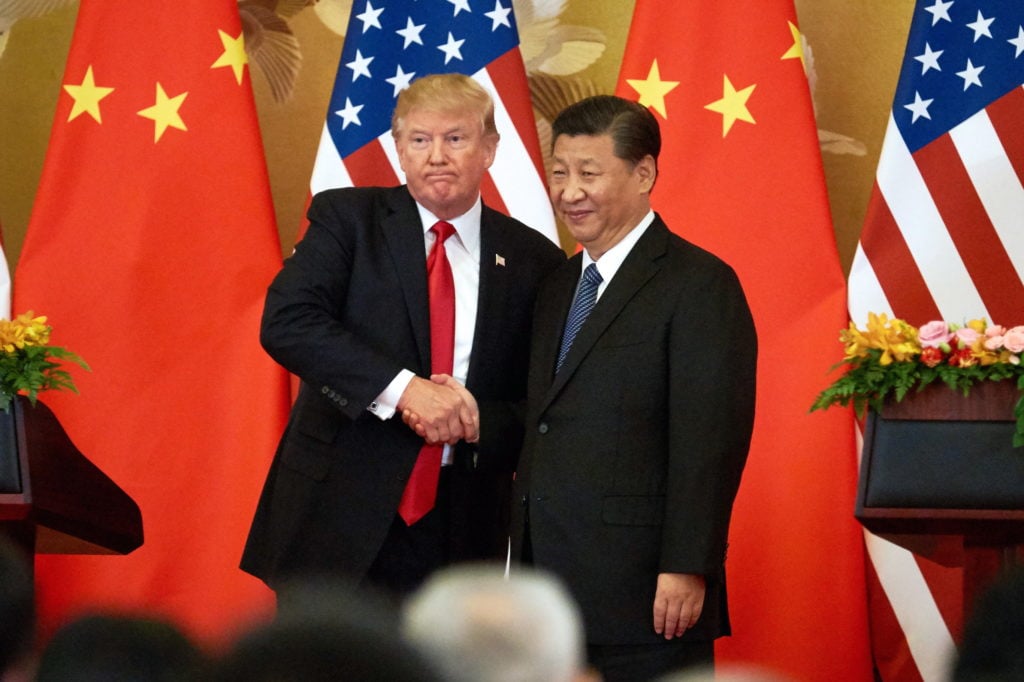Art World
Art Industry News: Arts Organizations Stream Into DC to Protest Trump’s Tariffs on Chinese Goods + Other Stories
Plus, Jewish scholars rally to support a German museum director and the doors of a Berlin techno club become a museum piece.

Plus, Jewish scholars rally to support a German museum director and the doors of a Berlin techno club become a museum piece.

Artnet News

Art Industry News is a daily digest of the most consequential developments coming out of the art world and art market. Here’s what you need to know this Wednesday, June 19.
Jewish Scholars Rally to Support Berlin Museum Director – Forty-five Talmud academics have signed a letter in support of Peter Schäfer, former director of the Berlin Jewish Museum, who resigned last Friday amid a wave of criticism over a tweet in which Schafer linked to a pro-Israel boycott article. The letter is unprecedented from the group, which tends not to comment on current affairs. “For those of us who know Prof. Schafer and his work, it is shocking to hear the claim that he is not committed to Jewish causes and the fight against antisemitism,” they write. Schafer is a leading scholar of Jewish studies in Germany. (Jerusalem Post)
Putin Grants Russian Citizenship to Collector’s Grandson – Putin has given Russian citizenship to the grandson of art collector Sergei Shchukin, André-Marc Delocque-Fourcaud, ahead of an exhibition of Shchukin’s collection at the Pushkin. The collection was seized by Lenin after the Bolshevik revolution, and Delocque-Fourcaud has long demanded that the seizure be acknowledged as illegal. He and his wife received Russian passports in a ceremony at the museum on Monday. (The Art Newspaper)
Why Lipstick Is a Conservator’s Nightmare – Sometimes a kiss is harmful. In 1997, someone kissed Andy Warhol’s Bathtub, which took eight hours of painstaking work by conservators to remove. But maybe Warhol wouldn’t have minded, says Jessica Beck, a curator at the Andy Warhol Museum, comparing the smooch to the red lips on Warhol’s Marilyn prints from the 1960s. (BBC)
Why Trump’s Tariffs on Chinese Art Will Only Hurt the US – Arts organizations are among the many groups descending on Washington, DC, this week to lobby against the US’s proposed 25 percent tariff on $300 billion worth of products of Chinese origin. In an op-ed, lawyer Peter Tompa notes that these restrictions would apply equally to a Chinese ink painting imported from Beijing and an antique Chinese bronze from an English collection sent to the US from London—with potentially disastrous effects. “No sophisticated collector abroad will consign cultural goods to a US dealer or auction house for future sale when a 25 percent duty will be collected up front,” he notes. (TAN)
How US Museums Woo Big Collectors – With $90 million David Hockneys and $89 million Rauschenbergs selling at auction, how can museums compete to secure art for the public trust? Barron’s checks in on this growing problem and explores how museums woo collectors to help fill gaps in their collections. “Museums can’t afford [the current market prices]. They can’t come up with that kind of money,” says collector J. Tomilson Hill. He recommends that collectors find out “what the hole is” at a museum and donate accordingly to leave their mark on an institution. (Barron’s)
Museum for California Art Names New Director – Kim Kanatani, the director of education at the Solomon R. Guggenheim Museum, has been appointed as the inaugural director of the UCI Institute and Museum for California Art, a new institution dedicated to California artists at the University of California, Irvine. She will take up the post in August. (Los Angeles Times)
Doors of Berlin Techno Club Head to a Museum – The former doors to the original Tresor nightclub, an icon of early 1990s Berlin, have been acquired by the Humboldt Forum. The doors symbolize a “threshold into a new era” after the city’s Cold War division, according to the museum. The club operated out of the massive bank safe rooms of a pre-war, Jewish-owned department store. (AFP)
Workers at the Frye Art Museum Unionize – Security workers at the Frye in Seattle voted unanimously on Tuesday to form the Art Workers Union, the first of its kind at an art institution in the city. The union, which has been recognized by the museum, is the latest to form at a US cultural institution, with similar actions taking place at the New Museum and the Brooklyn Academy of Music. (ARTnews)
Artist Creates Earthwork to Protest Trump’s Wall – Molly Gochman will create a 350-foot-long trail of red sand across a field at the Seattle-Tacoma International airport to make a statement against Donald Trump’s proposed US-Mexico border wall. For one year beginning August 3, Red Sand Project: Border US-MX will be visible to passengers on planes going to and from Seattle, and Gochman hopes it will inspire conversations about immigration and human trafficking. (TAN)
Chinese Electronics Company Is Accused of Ripping Off an Artist – Xiaomi, which manufactures cellphones, tablets, and laptops, has been accused of stealing the work of graphic designer Peter Tarka for its latest ad campaign. According to the Tarka, Xiaomi made barely any changes to his designs, which he made for a campaign for LG—a prime Xiaomi competitor. This is at least the second time the company has been accused of stealing artwork. (The Verge)
Serpentine Pavilion Is Unveiled Amid Turbulence – Following yesterday’s sudden resignation of Serpentine director Yana Peel, the gallery unveiled its annual summer pavilion. From afar, the Japanese architect Junya Ishigami’s temporary structure in Kensington Gardens is a slate mound that looks like a primitive cairn. But British health and safety regulations disrupted Ishigami’s plan, and the architect had to add columns and polycarbonate walls to prevent the wind from carrying away parts of his work, leaving him disappointed with the final result. (Guardian)